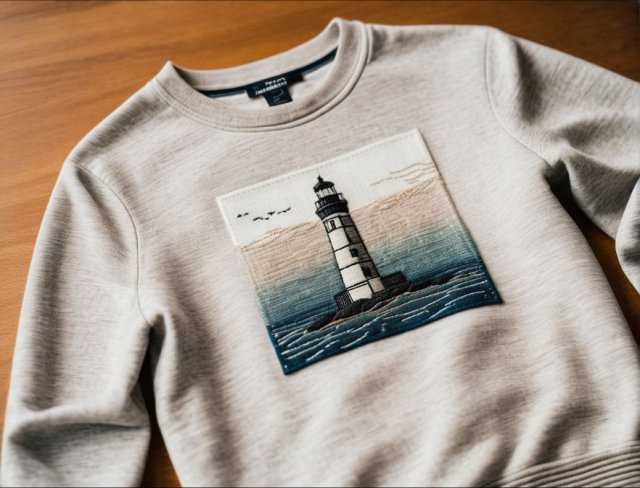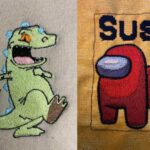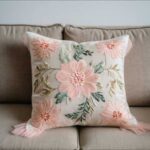Artistic Talent
Using Gradient Threads for Stunning Embroidery Effects
Introduction
Gradient threads are a versatile and captivating addition to the world of embroidery, allowing artisans to create designs with a rich, flowing color transition that can elevate the visual impact of any project. This type of thread, known for its smooth blending of colors from one hue to another, opens up a realm of creative possibilities. Whether used to enhance intricate designs or to add a subtle touch of color variation, gradient threads offer a unique way to achieve dynamic and aesthetically pleasing results.
Understanding how to effectively use gradient threads requires more than just selecting the right spool; it involves mastering techniques that ensure smooth transitions, addressing common challenges, and making informed decisions about thread choice. This article explores these facets in detail, providing a comprehensive guide to utilizing gradient threads to their fullest potential. From grasping the artistic impact of gradient threads to troubleshooting issues and selecting the best options for your projects, this guide aims to equip you with the knowledge and skills needed to create stunning embroidery that truly stands out.
Understanding Gradient Threads
Gradient threads, also known as variegated or ombre threads, are an exquisite innovation in the world of embroidery, characterized by their ability to transition seamlessly between different colors along their length. Unlike solid colored threads, which maintain a single hue throughout, gradient threads are dyed in such a way that the color changes, creating a continuous shift in shades.
This can range from subtle transitions within a color family, such as light blue to dark blue, to more dramatic shifts across the color spectrum, such as transitioning from yellow to red. The result is a thread that can add depth, dimension, and complexity to any embroidery project, transforming even the simplest designs into visually captivating works of art.
The beauty of gradient threads lies in their ability to mimic natural light and shadow, giving embroidered elements a more lifelike and three dimensional appearance. For instance, when used in floral designs, gradient threads can create petals that appear to naturally transition from lighter to darker shades, capturing the way light would naturally fall on a flower. This creates a dynamic, realistic effect that can be difficult to achieve with solid colored threads alone. The gradual color shifts also allow for a more nuanced depiction of textures, such as the soft blending of colors in a sunset or the intricate pattern of feathers on a bird.
Gradient threads come in a variety of materials, including cotton, rayon, polyester, and silk, each offering distinct qualities that can affect the final outcome of an embroidery piece. Cotton gradient threads, for example, are known for their matte finish and softness, making them ideal for projects where a more subtle, natural look is desired. Rayon threads, on the other hand, have a lustrous sheen that can enhance the brilliance of the colors, adding a touch of elegance and vibrancy to the embroidery.
Polyester gradient threads are highly durable and resistant to fading, making them suitable for items that require frequent washing or are exposed to sunlight. Silk gradient threads are prized for their luxurious feel and radiant glow, often used in high end projects where the quality of the thread can significantly elevate the overall appearance of the embroidery.
The length of the color transition in gradient threads can vary significantly depending on the manufacturer and the intended use of the thread. Some threads are designed with short color shifts, where the transition between colors occurs over just a few inches, creating a more rapid and noticeable change in hue. These short gradient threads are perfect for detailed designs or small areas where you want the color change to be more prominent. Other threads feature longer transitions, where the color shifts gradually over several feet, resulting in a more subtle and continuous blend. These long gradient threads are ideal for larger areas or for creating a soft, watercolor like effect in the embroidery.
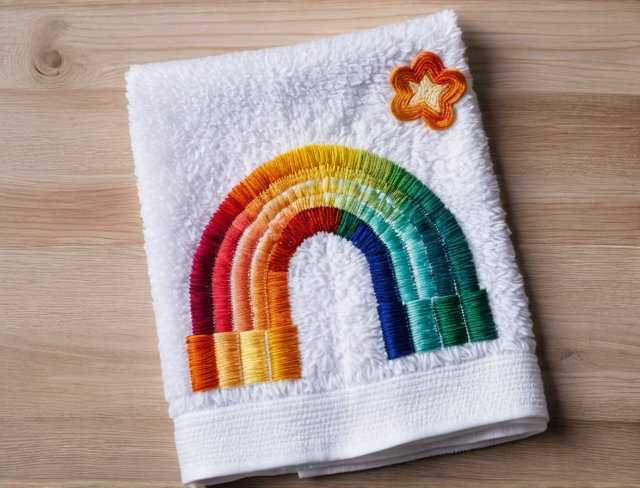
In addition to the physical characteristics of the thread, the color palette and the sequence of the gradient are also crucial considerations. Some gradient threads are designed with a monochromatic palette, shifting through different shades of a single color. This creates a harmonious and cohesive look that is particularly effective for designs that require a delicate touch.
Other gradient threads may incorporate multiple colors, transitioning from one hue to another in a sequence that can range from analogous (colors that are next to each other on the color wheel) to complementary (colors that are opposite each other on the color wheel). The choice of color sequence can dramatically affect the mood and impact of the embroidery, with analogous gradients providing a smooth and calming effect, while complementary gradients create a striking contrast that can make elements of the design pop.
One of the challenges of working with gradient threads is managing the placement of the color transitions within the design. Because the color shift is continuous, the appearance of the gradient in the final embroidery can vary depending on where you start and stop stitching with each thread. This requires careful planning and consideration, as the placement of the stitches will determine how the colors flow across the design.
In some cases, it may be necessary to adjust the stitch direction or even cut and re thread the needle to ensure that the gradient aligns with the contours and features of the embroidery. This level of control allows for precise manipulation of the gradient effect, enabling embroiderers to achieve the exact look they desire.
Gradient threads offer a unique opportunity to experiment with different stitching techniques and patterns. For example, using a satin stitch with gradient thread can create a smooth, uninterrupted flow of color that highlights the gradient effect, while a fill stitch can blend the colors together in a more textured, layered manner. The choice of stitch can greatly influence the overall effect of the gradient, allowing embroiderers to explore a wide range of creative possibilities.
Understanding the intricacies of gradient threads is essential for anyone looking to incorporate this versatile and visually striking material into their embroidery projects. By mastering the properties of these threads, including their color transitions, material composition, and stitch placement, embroiderers can unlock new dimensions of creativity and expression in their work. Whether used to add a subtle touch of color or to create bold, dramatic designs, gradient threads have the power to elevate embroidery to new levels of artistry.
The Artistic Impact of Gradient Threads
The use of gradient threads in embroidery extends beyond mere aesthetic appeal, allowing artists to explore and express complex visual and emotional concepts with remarkable finesse. These threads, which transition smoothly from one color to another, offer a unique palette that can significantly enhance the artistic quality of embroidery projects. The impact of gradient threads on artistic expression can be examined through their ability to replicate natural phenomena, evoke emotions, and create intricate visual effects.
• Mimicking Natural Phenomena
One of the most compelling aspects of gradient threads is their ability to replicate natural phenomena with a high degree of realism. In nature, color transitions are often subtle and fluid, from the gentle gradient of a sunrise to the shifting hues of a blooming flower. Gradient threads capture these natural nuances, allowing embroiderers to reproduce these effects in their work.
For instance, in landscape embroidery, gradient threads can simulate the soft transitions of light during different times of the day. A sunrise scene might use gradient threads to transition from cool blues and purples to warm oranges and yellows, effectively capturing the delicate progression of dawn. Similarly, a sunset design can employ gradient threads to blend rich reds and purples into darker blues, mirroring the natural deepening of the evening sky. This capability to mimic natural light and color transitions adds a layer of authenticity and depth to embroidered landscapes, making them appear more vibrant and dynamic.

Similarly, in floral designs, gradient threads can represent the natural gradation of color seen in petals and leaves. For example, a rose embroidered with gradient threads might exhibit a gradual shift from a light pink at the edges to a deeper pink or red at the center, mirroring how light interacts with the flower’s surface. This realistic representation not only enhances the visual appeal of the design but also imbues it with a sense of natural beauty and vitality.
• Evoking Emotions and Mood
Gradient threads also have the power to evoke emotions and set the mood of an embroidery piece through their color transitions. Color psychology plays a significant role in this, as different colors and their gradients can convey various emotional states and atmospheres.
Warm gradients, such as those transitioning from yellow to red, can evoke feelings of warmth, energy, and passion. This makes them ideal for designs meant to inspire or energize, such as motivational quotes or vibrant abstract patterns. The progression of warm colors can create a sense of movement and intensity, capturing the viewer’s attention and stimulating a positive emotional response.
Conversely, cool gradients, such as those moving from blue to green, can elicit feelings of calmness, tranquility, and serenity. These gradients are often used in designs that aim to provide a soothing effect, such as serene landscapes or calming abstract compositions. The gradual shift from one cool color to another can create a sense of peace and relaxation, making the embroidery piece a perfect addition to spaces intended for rest and contemplation.
Additionally, gradient threads can be used to convey more nuanced emotions through their complex color transitions. For instance, a gradient moving from a pale, muted color to a vibrant, saturated hue can suggest a journey from introspection to enlightenment, capturing a transformative emotional experience. This ability to communicate layered emotional states through color transitions adds a profound depth to the artistic impact of embroidery.
• Creating Intricate Visual Effects
The visual effects achievable with gradient threads are both diverse and intricate. The smooth transition of colors can enhance various aspects of embroidery design, from texture and depth to movement and light. In terms of texture, gradient threads can simulate a range of effects. For example, in a design featuring a flowing waterfall, gradient threads can create the illusion of water cascading and reflecting light, with the colors transitioning from cool blues at the top to deeper greens at the base. This technique can enhance the three dimensionality of the embroidery, making it appear as though the water is moving and shimmering.
The use of gradient threads can also create dynamic movement within a design. In abstract embroidery or patterns that suggest motion, gradient threads can be employed to depict movement and flow. For example, a swirling design might use a gradient thread that transitions from one color to another in a spiral pattern, mimicking the motion of a whirlpool or tornado. This effect can make the embroidery appear as though it is in motion, adding a sense of energy and vitality to the piece.
Gradient threads can be used to simulate light and shadow, adding depth and dimensionality to flat designs. For instance, in a portrait or figure embroidery, gradient threads can highlight the contours and features by transitioning from lighter to darker shades, creating a natural play of light and shadow that enhances the realism and detail of the image.
The artistic impact of gradient threads in embroidery is profound and multifaceted. By mimicking natural color transitions, evoking emotions and moods, and creating intricate visual effects, gradient threads offer artists a powerful tool for enhancing their designs. Whether used to replicate the beauty of nature, convey complex emotional states, or add dynamic visual elements, gradient threads enable embroiderers to push the boundaries of their creativity and achieve stunning, evocative results.
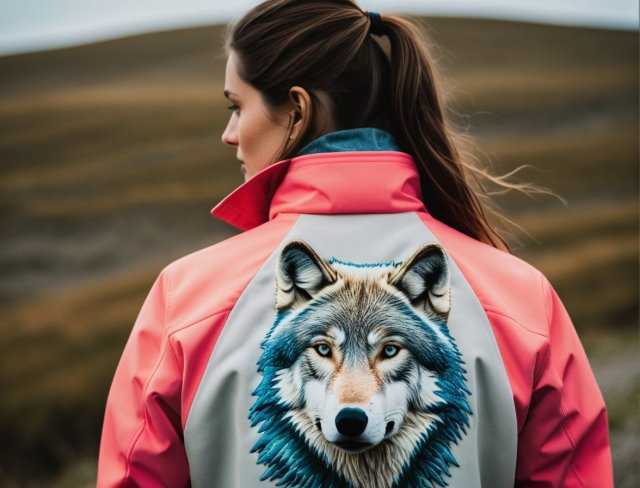
Techniques for Mastering Gradient Thread Embroidery
Mastering the use of gradient threads in embroidery requires a combination of technical skill, artistic vision, and careful planning. The unique properties of gradient threads, with their continuous color transitions, offer both challenges and opportunities for creating visually stunning designs. To achieve the best results, embroiderers must be mindful of thread placement, blending techniques, stitch selection, and even the fabric used. Here’s an in depth exploration of the key techniques that can help you master gradient thread embroidery and elevate your craft to new heights.
1. Strategic Thread Placement and Direction
One of the most crucial aspects of working with gradient threads is the strategic placement and direction of your stitches. Since gradient threads change color along their length, the way you position your stitches will determine how the color transitions appear in the final design. Careful planning is essential to ensure that the color shifts occur in the most visually effective areas of your embroidery.
For example, when working on a floral design, you might want the gradient to move from a lighter color at the tip of a petal to a darker shade at the base. To achieve this effect, you must plan your stitches so that the color change aligns with the natural flow of the petal. This might involve adjusting the stitch direction or even re threading your needle to ensure the color transition occurs precisely where you want it.
Similarly, when embroidering a landscape, you can use the direction of your stitches to mimic the natural flow of elements like water, wind, or light. For instance, in a depiction of a sunset, you might use long, horizontal stitches to capture the smooth transition of colors across the sky. By aligning your stitches with the contours and movement of the design, you can enhance the realism and depth of the piece, making the color transitions appear more natural and fluid.
2. Layering and Blending Gradient Threads
Another powerful technique for mastering gradient thread embroidery is layering and blending different threads to create more complex and nuanced effects. By combining multiple gradient threads or mixing them with solid colored threads, you can achieve a richer, more textured appearance in your designs.
Layering involves stitching over an area multiple times with different threads, allowing the colors to build up and blend together. This technique is particularly effective in areas where you want to create a sense of depth or shadow. For example, in a landscape design, you might layer a gradient thread that shifts from green to brown over a solid green thread to create the illusion of shadows on grass or foliage. The gradual blending of colors can make the transition between light and dark areas more seamless, enhancing the three dimensionality of the embroidery.
Blending can also be achieved by using multiple threads in the needle at once, such as combining a gradient thread with a solid thread. This approach can create a more subtle, mixed effect where the gradient adds hints of color variation without overpowering the base color. This technique is particularly useful for adding highlights or creating a soft, watercolor like effect in areas where you want the color change to be more subdued.
3. Utilizing Contrast and Highlighting
Gradient threads can be strategically used to create contrast and highlight specific elements within a design. By juxtaposing gradient threads with solid threads or using them in contrast to other elements of the design, you can draw attention to key areas and add visual interest to the embroidery.
For instance, in a portrait or figure embroidery, you might use gradient threads to highlight the contours of the face or body, creating a soft transition from light to shadow. This can add depth and dimension to the figure, making it stand out against a more uniform background. The subtle shifts in color can also enhance the realism of the portrait, giving it a lifelike quality.
Additionally, you can use gradient threads to create contrast within the design itself by selecting threads with opposing color transitions. For example, a design that features both warm and cool gradients, such as a sun setting over a cool blue ocean, can create a striking visual impact. The contrast between the warm tones of the sunset and the cool tones of the water can add drama and intensity to the embroidery, making it more visually compelling.
Another way to utilize contrast is by placing gradient threads against a background of solid colors. This technique can make the gradient effect more pronounced, as the color shifts stand out more vividly against the uniformity of the solid color. For example, a design featuring a single gradient threaded element, such as a flower or a piece of jewelry, on a solid background can draw the viewer’s eye directly to that element, emphasizing its importance within the composition.
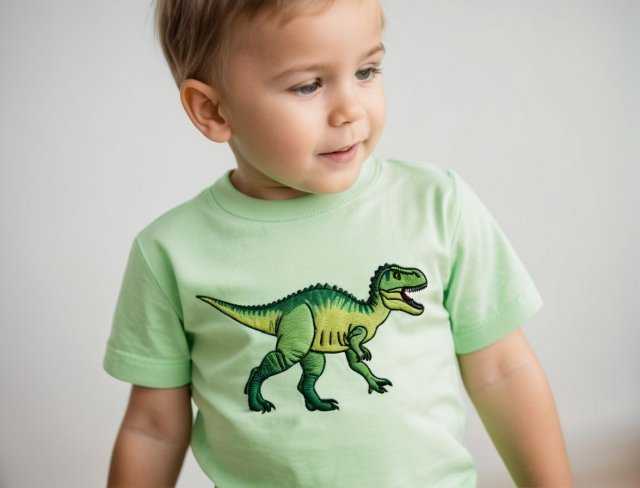
4. Experimenting with Different Stitch Patterns
The choice of stitch pattern is another critical factor in mastering gradient thread embroidery. Different stitch patterns can enhance or alter the appearance of the gradient effect, allowing you to achieve a variety of visual outcomes depending on your artistic intent.
Satin Stitch: The satin stitch is one of the most commonly used techniques in gradient thread embroidery. This smooth, even stitch is ideal for showcasing the full length of the gradient thread, allowing the color transitions to appear uninterrupted and fluid. Satin stitches work particularly well in designs with large, open areas, such as petals, leaves, or abstract shapes, where the continuous flow of color can be fully appreciated.
Fill Stitch: Fill stitches, such as the brick stitch or the seed stitch, can be used to create a more textured, layered effect with gradient threads. These stitches involve filling an area with multiple, smaller stitches that overlap and blend together, creating a more complex interplay of colors. Fill stitches are particularly effective in areas where you want to create a more subtle gradient effect, such as in backgrounds or in areas with fine detail. The overlapping stitches can help to soften the color transitions, giving the design a more painterly, blended appearance.
Long and Short Stitch: The long and short stitch is another versatile technique that can be used to create gradient effects. This stitch involves alternating between long and short stitches to gradually build up color and texture within an area. When used with gradient threads, the long and short stitch can create a more gradual, blended transition between colors, making it ideal for areas that require a soft, gradual gradient, such as the shading of a face or the folds of fabric.
5. Understanding Fabric Compatibility and Preparation
The fabric you choose for your embroidery can greatly impact the effectiveness of gradient thread techniques. Different fabrics interact with gradient threads in unique ways, affecting how the color transitions appear and how the stitches sit on the fabric surface.
Fabric Weave and Texture: The weave and texture of the fabric can influence how the gradient effect is perceived. For example, tightly woven fabrics, such as cotton or linen, provide a smooth, even surface that allows the gradient thread to glide effortlessly, showcasing the color transitions clearly. In contrast, loosely woven or textured fabrics, such as burlap or wool, may cause the thread to sink into the fabric or create a more diffused effect. Understanding how your chosen fabric interacts with the thread is crucial for achieving the desired outcome.
Fabric Color: The color of the fabric also plays a significant role in how the gradient effect is perceived. A light colored fabric can enhance the brightness and clarity of the gradient, making the color transitions more visible. Conversely, a dark colored fabric may subdue the gradient effect, requiring careful consideration of thread placement and stitch density to ensure the color changes are still noticeable. Additionally, when working with gradient threads on patterned fabrics, it is important to consider how the fabric’s design will interact with the thread’s color transitions.
Stabilizing the Fabric: Properly stabilizing the fabric is essential when working with gradient threads, as it helps to maintain even tension and prevent puckering. Using the right type of stabilizer, such as a tear away or cut away stabilizer, can ensure that the fabric remains stable during stitching, allowing the gradient thread to maintain its smooth color transitions. Depending on the complexity of the design and the type of fabric, you may also need to use additional stabilizing techniques, such as hooping or basting, to keep the fabric taut and ensure consistent results.
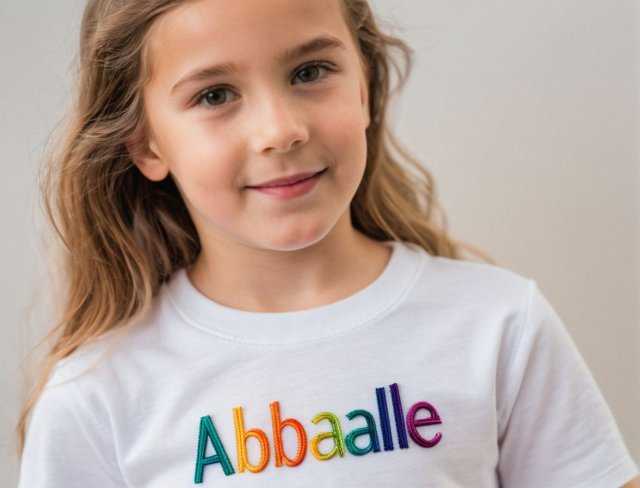
6. Practicing Patience and Precision
Finally, mastering gradient thread embroidery requires patience and precision. The continuous color shifts in gradient threads demand careful attention to detail and a deliberate approach to stitching. Rushing through the process or neglecting to plan can lead to uneven color transitions, misaligned stitches, and a less polished final product.
Take the time to carefully plan your design, considering how the color transitions will align with the elements of the embroidery. Experiment with different stitch patterns and techniques on a sample fabric before starting your main project to ensure that you are satisfied with the gradient effect. As you work, regularly step back and evaluate your progress, making adjustments as needed to maintain the integrity of the color transitions and the overall design.
Mastering gradient thread embroidery is a journey that combines technical skill, artistic creativity, and careful planning. By strategically placing stitches, blending and layering threads, utilizing contrast, experimenting with stitch patterns, understanding fabric compatibility, and practicing patience, you can unlock the full potential of gradient threads and create embroidery that is both visually stunning and artistically expressive. Whether you are aiming for subtle, blended effects or bold, dramatic color transitions, these techniques will help you achieve the best possible results and take your embroidery to the next level.
Choosing the Right Gradient Thread for Your Project
Selecting the appropriate gradient thread for your embroidery project is a critical step that can significantly impact the final outcome of your work. Gradient threads, also known as variegated or ombré threads, offer a wide range of color transitions, from subtle shifts between similar tones to dramatic changes across the color spectrum. The choice of gradient thread can influence the mood, texture, and overall aesthetic of your embroidery, making it essential to carefully consider several factors before starting your project. Here’s a comprehensive guide to help you choose the right gradient thread for your embroidery project.
• Understanding the Types of Gradient Threads
Before diving into the selection process, it’s important to understand the different types of gradient threads available on the market. Gradient threads can vary in terms of color transition length, thread material, and the number of colors within the gradient. Familiarizing yourself with these variations will help you make an informed decision that aligns with your project goals.
Short Transition Gradient Threads: These threads have frequent color changes along their length, with transitions occurring every few inches. Short transition gradient threads are ideal for projects where you want a more dynamic and varied color effect, as the frequent changes can create a lively, textured appearance. They work well in designs with smaller details or intricate patterns, where the rapid color shifts can add depth and interest.
Long Transition Gradient Threads: In contrast, long transition gradient threads feature gradual color changes over a greater length of thread. These threads are perfect for projects where you want a smoother, more seamless gradient effect, such as in large areas of shading or backgrounds. The extended color transitions can create a more subtle and sophisticated look, making them ideal for realistic representations or soft, blended effects.
Monochromatic Gradient Threads: These threads transition between different shades of a single color, such as light blue to dark blue or pale pink to deep red. Monochromatic gradient threads are perfect for creating depth and dimension within a single color family, making them ideal for projects like floral designs, where you want to emphasize shading and highlights without introducing new colors.
Multicolored Gradient Threads: These threads shift between multiple, distinct colors, offering a more vibrant and varied color palette. Multicolored gradient threads are ideal for bold, artistic designs that aim to capture attention and showcase a wide range of colors. They are particularly effective in abstract or whimsical designs, where the unexpected color transitions can add a playful and dynamic element.
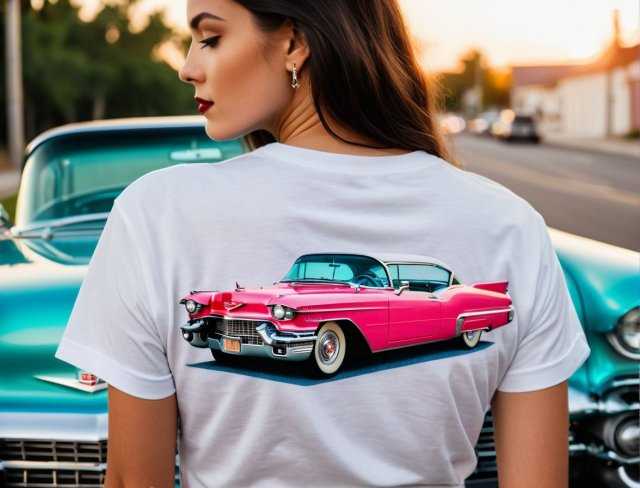
Metallic Gradient Threads: Some gradient threads incorporate metallic fibers, adding a shimmering effect to the color transitions. Metallic gradient threads are great for projects that require a touch of sparkle or a luxurious finish, such as holiday decorations, formal wear, or ornamental designs. However, they can be more challenging to work with due to their texture, so it’s important to consider the fabric and needle size when using metallic threads.
• Matching Gradient Threads to Your Design and Theme
The design and theme of your project play a crucial role in determining the right gradient thread. The colors and transitions within the thread should complement the overall aesthetic and purpose of the embroidery, enhancing the visual appeal and ensuring the design’s success.
Color Harmony and Contrast: Consider the color harmony and contrast within your design. If your project features a cohesive color scheme, such as a floral bouquet in shades of pink and green, choosing a gradient thread that transitions between these colors can enhance the unity of the design. On the other hand, if your design aims to create a bold statement, selecting a gradient thread with contrasting colors, like blue to orange, can add visual interest and make specific elements pop.
Emotional Impact: The emotional tone of your project is another factor to consider. Gradient threads can evoke different moods depending on their color transitions. For a design meant to convey tranquility, such as a seascape, a gradient thread that transitions from soft blues to pale greens would be ideal. In contrast, a design intended to express energy and excitement, like a fireworks display, would benefit from a gradient thread with vibrant, contrasting colors, such as red to yellow or purple to pink.
Detail and Scale of the Design: The level of detail and the scale of your design will also influence your thread choice. For highly detailed or small scale designs, such as intricate monograms or delicate lacework, short transition gradient threads may be more effective, as they provide frequent color changes that can highlight fine details. For larger scale designs, like a full embroidery hoop landscape or a large floral pattern, long transition gradient threads can create smooth, sweeping color changes that add depth and dimension without overwhelming the design.
Artistic Intent: Your artistic intent and the story you want to tell through your embroidery should guide your thread choice. If your goal is to create a realistic depiction of a natural scene, such as a sunset or a field of wildflowers, you might choose a gradient thread that mimics the natural color transitions in those settings. If you’re aiming for a more abstract or interpretive design, experimenting with unusual or unexpected gradient threads can add a unique and creative flair to your work.
• Considering Fabric Compatibility and Thread Weight
The fabric you choose for your embroidery project will interact with the gradient thread in various ways, affecting the overall appearance and feel of the finished piece. Additionally, the weight of the thread plays a significant role in how the gradient effect is perceived.
Fabric Texture and Weave: The texture and weave of the fabric can influence how the gradient thread appears. Smooth, tightly woven fabrics like cotton or silk allow the gradient thread to glide across the surface, showcasing the color transitions clearly. These fabrics are ideal for projects where you want the gradient effect to be the focal point. On the other hand, textured or loosely woven fabrics, such as linen or burlap, may cause the thread to sink into the fabric or create a more diffused appearance, which can be desirable for a more subtle, blended effect.
Fabric Color: The color of the fabric can either enhance or diminish the gradient effect. Light colored fabrics tend to highlight the gradient transitions, making them more visible and vibrant. Dark colored fabrics, however, may subdue the gradient effect, requiring careful consideration of thread placement and stitch density to ensure the color shifts are still noticeable. If you’re working with a patterned fabric, consider how the pattern will interact with the gradient thread. A busy pattern may compete with the gradient effect, while a simple or monochromatic pattern can allow the gradient to shine.
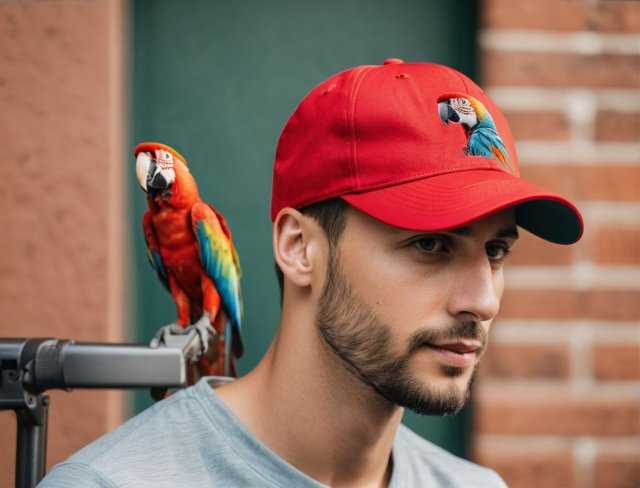
Thread Weight: The weight or thickness of the thread also affects how the gradient is perceived. Finer threads, such as those used for delicate embroidery or cross stitch, may create a more subtle gradient effect, as the color transitions will be less pronounced. These are ideal for projects where you want a soft, blended look. Thicker threads, such as those used for heavy embroidery or needlepoint, will produce more dramatic and visible color transitions, making them suitable for bold designs or areas where you want the gradient effect to stand out.
Thread Material: The material of the thread, whether cotton, silk, polyester, or metallic, also influences the gradient’s appearance. For example, silk gradient threads may have a lustrous sheen that enhances the color transitions, making them ideal for elegant or formal projects. Cotton threads offer a more matte finish, which can create a more natural or rustic look. Metallic threads add a shimmer that can highlight certain areas of the design, drawing attention to the gradient effect.
• Evaluating Thread Quality and Durability
The quality and durability of the gradient thread are essential considerations, especially for projects that will be handled frequently or exposed to wear and tear. High quality threads ensure that the color transitions are consistent and that the thread can withstand the demands of stitching without fraying or breaking.
Colorfastness: One of the most important factors to consider is the colorfastness of the thread, which refers to the thread’s ability to retain its color after washing or exposure to light. Inferior threads may fade over time, especially if the embroidery is exposed to sunlight or frequent laundering. To ensure the longevity of your project, choose gradient threads from reputable manufacturers that guarantee colorfastness. If possible, test a small section of the thread before starting your project to check for any color bleeding or fading.
Thread Strength: The strength of the thread is another key factor, particularly for projects that will experience regular handling or wear, such as clothing, accessories, or home décor items. Strong, durable threads are less likely to break during stitching and will hold up better over time. Polyester and cotton threads are known for their strength, making them good choices for projects that require durability.
Smoothness and Consistency: The smoothness and consistency of the thread affect both the ease of stitching and the final appearance of the embroidery. High quality gradient threads should be smooth and free from knots, lumps, or irregularities that could cause the thread to snag or break. Smooth threads also ensure that the color transitions appear even and uninterrupted, contributing to a polished and professional finish.
Brand Reputation: Consider purchasing gradient threads from well known and reputable brands, as these companies are more likely to offer high quality products with consistent color transitions and durability. Some popular brands known for their gradient threads include DMC, Aurifil, and Sulky. Reading reviews or seeking recommendations from other embroiderers can also help you find the best threads for your project.
• Experimenting with Sample Swatches
Before committing to a specific gradient thread for your entire project, it’s a good idea to create sample swatches to see how the thread behaves on your chosen fabric and how the color transitions appear in your design. This step allows you to experiment with different threads, stitch patterns, and techniques to find the combination that best suits your project.
Creating Test Samples: Start by stitching a small section of your design using the gradient thread on the fabric you plan to use for the final project. Pay attention to how the color transitions appear, how the thread interacts with the fabric, and whether the effect matches your artistic vision. Experiment with different stitch patterns and directions to see how they affect the gradient. For example, straight stitches may create a more linear gradient effect, while satin stitches can produce a smoother blend of colors.
Assessing the Final Appearance: Once your sample is complete, step back and assess the overall appearance. Consider whether the gradient effect enhances the design, whether the colors are harmonious with the rest of the project, and whether the thread choice meets your expectations. If you’re not satisfied with the result, try a different gradient thread or adjust your stitching technique until you achieve the desired effect.
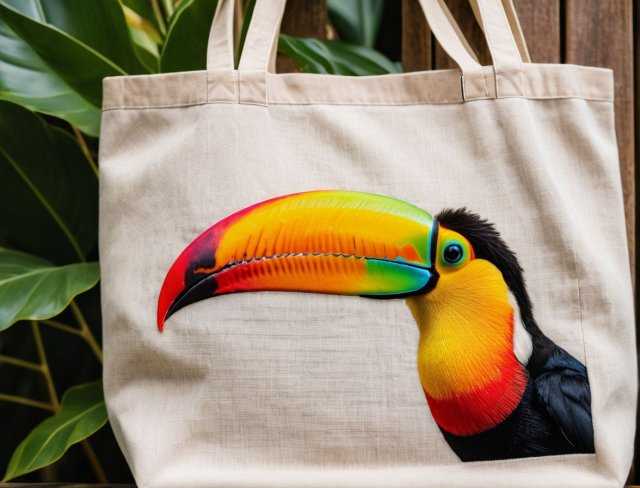
Recording Your Findings: Keep a record of your sample swatches, including the thread brand, color number, and any notes on the stitching process. This information can be invaluable for future projects, helping you remember which threads and techniques worked well and which ones didn’t.
• Final Considerations and Making Your Choice
After evaluating all the factors mentioned above, it’s time to make your final decision. Remember that the right gradient thread for your project will not only complement your design but also enhance the overall aesthetic and artistic impact of your embroidery.
Trusting Your Artistic Instincts: While it’s important to consider the technical aspects of choosing a gradient thread, don’t forget to trust your artistic instincts. If a particular thread excites you or sparks your creativity, it’s likely a good choice for your project. Embroidery is both a craft and an art form, and your personal preferences and creative vision should guide your decisions.
Considering the Project’s Purpose: Finally, think about the purpose of your project. Is it a personal piece meant to be cherished by you or a loved one, or is it a commissioned work for a client? Is it a decorative item that will be displayed in a home, or is it a functional piece that will be worn or used regularly? The answers to these questions can influence your thread choice, as different projects may require different levels of durability, colorfastness, and overall aesthetic.
By thoughtfully weighing each of these considerations, understanding the types of gradient threads, matching them to your design and theme, evaluating fabric compatibility, considering thread weight and material, and assessing thread quality, you set the foundation for a well executed embroidery project. The process of choosing the right gradient thread is not merely a technical decision but a creative journey that can deeply influence the artistic outcome of your work.
Taking the time to experiment with different options, such as creating sample swatches and testing various threads on your chosen fabric, allows you to see firsthand how each thread will behave in your design. This experimentation helps you refine your choices, ensuring that the thread not only meets your technical needs but also aligns with your creative vision.
This careful selection process empowers you to make informed decisions that enhance the visual impact of your embroidery. Whether you aim for subtle elegance with a monochromatic gradient or bold vibrancy with multicolored threads, your thoughtful consideration of each factor ensures that the final piece will be both aesthetically pleasing and technically sound. The investment of time and effort in this process pays off in the quality and beauty of the finished work.
Ultimately, this deliberate approach to selecting gradient threads allows you to create embroidery that is not only stunning but also a true reflection of your artistic intent, leading to a successful and satisfying project.
Troubleshooting Common Challenges
Embroidery with gradient threads, while rewarding, can come with its own set of challenges. Addressing these issues effectively requires a comprehensive understanding of both the thread and the embroidery process. Here’s a detailed guide to troubleshooting common challenges associated with gradient threads, ensuring you achieve the best possible results in your projects.
♦ Uneven Color Transitions
One of the most frequent issues with gradient threads is achieving smooth and consistent color transitions. If you notice that the color gradient appears uneven or patchy, this could be due to several factors.
First, ensure that the thread is properly wound on the spool. An uneven winding can cause inconsistent tension, leading to irregular color transitions. To remedy this, check the spool for any tangles or uneven winding and re spool if necessary.
Second, the tension settings on your embroidery machine play a crucial role. Improper tension can cause the thread to bunch up or stretch unevenly, disrupting the gradient effect. Adjusting the upper and bobbin thread tension may help achieve a more even color flow. Test the adjustments on a sample piece of fabric to find the right balance.
Lastly, the type of stitch and stitching technique can influence color transitions. Certain stitch types, such as satin stitches or fill stitches, may impact how the gradient thread blends. Experiment with different stitches to see which best accommodates the gradient thread and provides a smoother transition. For instance, using longer stitches or adjusting the stitch density may help in achieving a more even gradient.
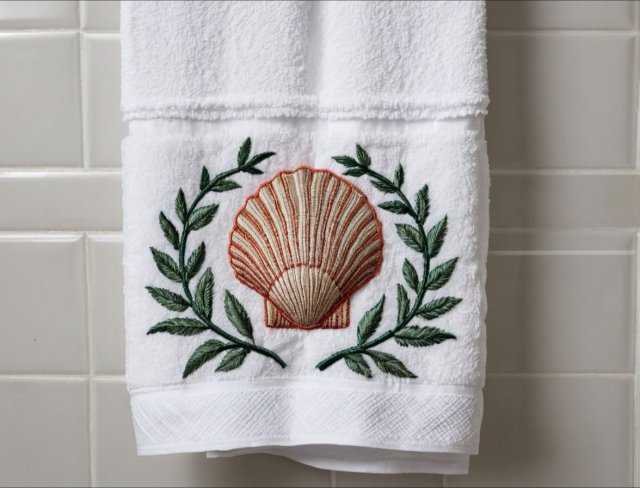
♦ Thread Breakage and Fraying
Thread breakage or fraying can be particularly frustrating and may disrupt your embroidery project. This issue can arise from various causes, including thread quality, machine settings, or fabric type.
Firstly, assess the quality of your gradient thread. Poor quality threads may be more prone to breaking or fraying. Opt for high quality threads from reputable brands to minimize these problems. If you experience frequent breakage, consider switching to a different thread brand or type that offers better durability.
Secondly, check your embroidery machine’s needle and settings. A dull or damaged needle can cause the thread to fray or break. Ensure you are using the correct needle type for the thread weight and fabric. For gradient threads, a needle with a larger eye may help reduce friction and prevent fraying. Additionally, ensure the needle is properly inserted and adjusted to avoid unnecessary stress on the thread.
Lastly, the choice of fabric can affect thread performance. Heavily textured or coarse fabrics may cause increased friction and lead to thread breakage. If you’re using such fabrics, consider adjusting the tension or using a stabilizer to support the fabric and reduce thread stress.
♦ Color Bleeding and Running
Color bleeding, where the dye from the gradient thread runs into adjacent areas, can mar the appearance of your embroidery. This issue is particularly common with threads that are not colorfast.
To address color bleeding, start by pre washing your gradient threads and fabric. This step helps remove any excess dye that might cause bleeding. Follow the manufacturer’s instructions for washing, and use a mild detergent that’s suitable for the thread type. For threads that are not colorfast, consider using a color catcher sheet in the wash to absorb any loose dye.
Additionally, ensure that you are not overloading the thread in the embroidery machine. Excessive thread tension or over stitching can increase the risk of color bleeding. Adjust the thread tension and stitch density to ensure that the gradient effect is achieved without compromising the color integrity.
If you notice color bleeding during the embroidery process, consider using a fixative or stabilizer to prevent further issues. Some stabilizers can help lock in the color and reduce bleeding, while others provide a barrier between the thread and fabric.
♦ Inconsistent Thread Thickness
Inconsistent thread thickness can lead to uneven stitching and disrupt the gradient effect. Variations in thread thickness can result from manufacturing defects or improper handling.
To address inconsistent thread thickness, inspect the gradient thread for any irregularities before use. Look for lumps, uneven winding, or variations in the thread diameter. If you find any issues, discard the defective thread and use a new spool.
If you encounter inconsistent thickness during embroidery, it may be helpful to adjust the machine’s thread tension. Proper tension settings can accommodate slight variations in thread thickness and ensure a more consistent stitch appearance. Additionally, regularly clean and maintain your embroidery machine to prevent any build up of debris that could affect thread performance.
♦ Misalignment of Color Segments
When working with gradient threads, misalignment of color segments can occur, resulting in an uneven or disjointed gradient effect. This issue often arises from improper thread handling or incorrect machine settings.
To prevent misalignment, ensure that the gradient thread is correctly threaded through the machine and that the spool is properly positioned. Incorrect threading can cause the thread to catch or pull unevenly, affecting the gradient effect. Check the thread path and make sure it follows the machine’s threading guides.
Additionally, review your embroidery design and machine settings. Some designs may require adjustments to accommodate the gradient thread’s characteristics. For example, increasing the stitch density or modifying the design’s stitch sequence can help achieve better alignment of the color segments.

♦ Fabric Shifting or Distortion
Fabric shifting or distortion during embroidery can impact the gradient effect and overall design. This issue is often caused by inadequate stabilizing or incorrect hooping.
To address fabric shifting, ensure that you use an appropriate stabilizer for your fabric type. Stabilizers help support the fabric and prevent shifting or distortion during stitching. For fabrics that are prone to shifting, consider using a stronger stabilizer or additional layers of stabilizer.
Proper hooping is also essential to prevent fabric distortion. Make sure the fabric is taut and evenly positioned within the hoop. Check for any wrinkles or creases before starting the embroidery process, and adjust the fabric as needed to ensure a smooth, stable surface.
♦ Thread Tension Issues
Thread tension issues can affect the appearance of the gradient effect and cause various problems, such as puckering, looping, or uneven stitching. Proper thread tension is crucial for achieving a smooth and consistent gradient.
To resolve tension issues, start by checking the machine’s tension settings. Adjust the upper and bobbin thread tension according to the thread weight and fabric type. Test the tension settings on a sample piece of fabric to ensure that the gradient effect is even and the stitching is smooth.
If you experience persistent tension problems, consider cleaning the machine and checking for any build up of lint or debris that could affect the thread flow. Regular maintenance and calibration of your embroidery machine can help prevent tension issues and ensure optimal performance.
By addressing these common challenges with careful troubleshooting, you can overcome potential issues and achieve a beautifully embroidered project with gradient threads. Each problem requires a methodical approach to identify the root cause and apply effective solutions, ensuring that your gradient thread embroidery is both visually stunning and technically sound.
Conclusion
Incorporating gradient threads into your embroidery projects offers a dynamic way to enhance the visual appeal and artistic depth of your designs. From understanding the different types of gradient threads to mastering the techniques for their effective use, each step in the process contributes to achieving a stunning final result. By carefully selecting the right gradient thread based on your project’s design, theme, and fabric compatibility, and by troubleshooting common challenges such as uneven color transitions and thread breakage, you can ensure that your embroidery not only meets but exceeds your creative expectations.
Ultimately, the key to successful embroidery with gradient threads lies in a combination of thoughtful planning, meticulous execution, and ongoing experimentation. Embracing these elements allows you to harness the full potential of gradient threads, turning your vision into a beautifully executed piece of art. With practice and patience, you will find that the gradient thread can become a powerful tool in your embroidery arsenal, adding depth, movement, and sophistication to your work.
Now that you have read through this article, feel free to SHOP for products we have created. If you are looking for something special which isn’t in our store, feel free to contact us.
